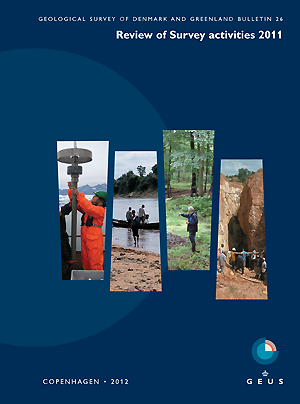Geology of the Femern Bælt area between Denmark and Germany
DOI:
https://doi.org/10.34194/geusb.v26.4740Abstract
Geological and geotechnical investigations in the Femern Bælt area were undertaken from 1995 to 2010 (Rambøll Arup JV 2011) in preparation for the fixed link between Lolland in Denmark and Fehmarn in Germany. As a result, new data have been acquired on the stratigraphy and distribution of the deposits and the major structures and tectonic influence on the layers close to the surface. Previous investigations of Cretaceous–Palaeogene deposits on southern Lolland (Fig. 1) were limited due to lack of outcrops and borehole data. Two deep boreholes and geophysical surveys (1952–1953) revealed: (1) the presence of a salt diapir at Rødbyhavn, (2) upper Maastrichtian chalk 29–143 m below Quaternary deposits and (3) an erosional window in the Palaeogene cover. Boreholes to the east of Rødbyhavn (1992–1994) revealed the sediment distribution on southern Lolland and showed that Cretaceous and Palaeogene deposits are cut by several NW–SE-orientated faults. This paper presents a summary of lithostratigraphic and biostratigraphic investigations and a brief description of the geological development in the area.
Downloads
Downloads
Published
How to Cite
Issue
Section
License
GEUS Bulletin is an open-access, peer-reviewed journal published by the Geological Survey of Denmark and Greenland (GEUS). This article is distributed under a CC-BY 4.0 licence, permitting free redistribution and reproduction for any purpose, even commercial, provided proper citation of the original work. Author(s) retain copyright over the article contents. Read the full open access policy.







